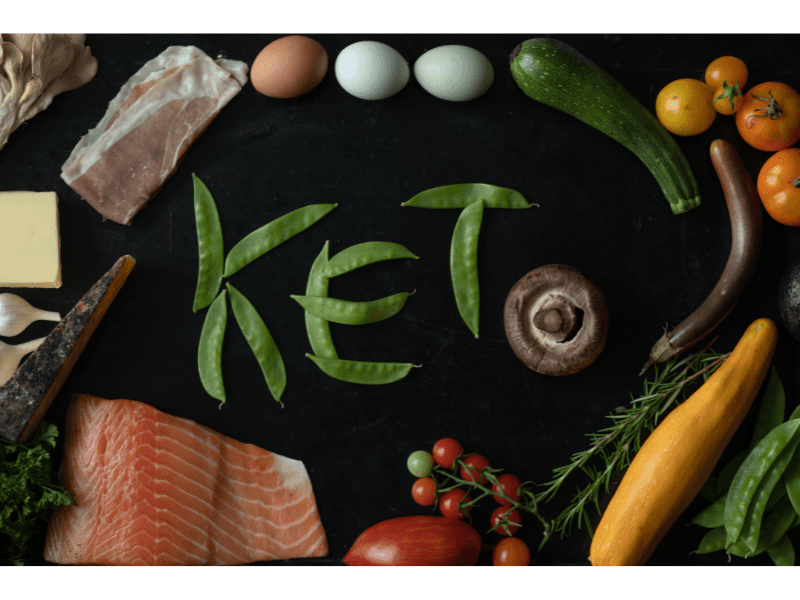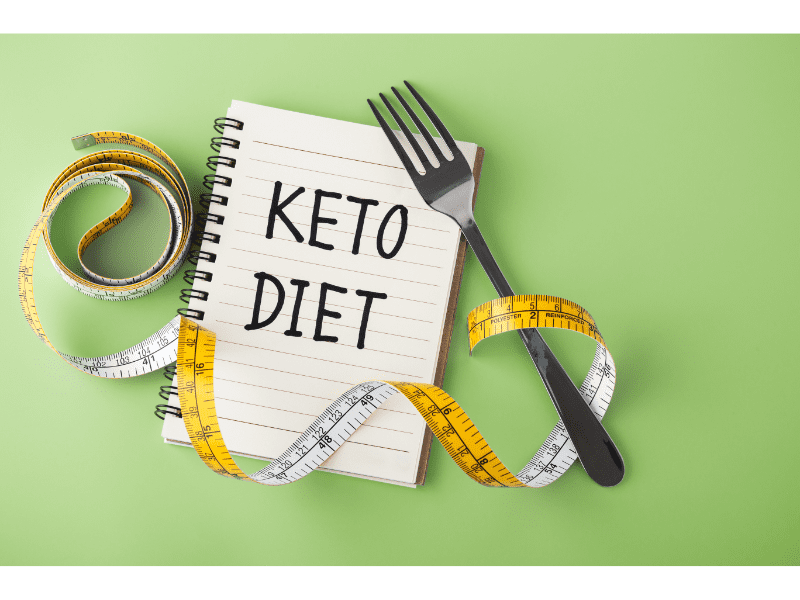Understanding the Basics of the Keto Diet
The Keto diet, short for the ketogenic diet, has gained significant popularity in recent years as a way to achieve weight loss and improve overall health. This low carb, high fat diet is designed to shift the body’s metabolism into a state of ketosis, where it primarily burns fat for fuel instead of carbohydrates.
The concept behind the Keto diet is relatively simple – by drastically reducing carbohydrate intake and increasing fat consumption, the body enters a metabolic state known as ketosis. During ketosis, the liver produces ketones from stored fats, which are then used as an alternative source of energy.
By following a keto lifestyle, individuals aim to train their bodies to become efficient at burning fat for fuel rather than relying on carbohydrates. This can lead to significant weight loss and numerous health benefits such as improved insulin sensitivity and increased mental clarity.
In this section, we will delve deeper into the fundamentals of the keto diet for beginners. We will explore its principles, food choices, potential benefits and risks associated with following this dietary approach. Whether you are considering adopting a keto lifestyle or simply seeking more knowledge on this topic, this section will provide you with valuable insights into understanding the basics of the keto diet. The keto diet, short for ketogenic diet, is a low-carbohydrate, high-fat eating plan. Its main principle is to shift your body’s primary fuel source from carbohydrates to fats, putting it into a state of ketosis. Ketosis occurs when the body doesn’t have enough carbohydrates to use as energy and starts breaking down fats instead.

When following the keto diet, you’ll typically consume foods that are low in carbs but high in healthy fats such as avocados, nuts and seeds, olive oil, and fatty fish. Protein intake should be moderated as excessive protein can be converted into glucose by the body.
There are several potential benefits associated with the keto diet. It has been found effective for weight loss because it helps control hunger hormones and promotes fat burning. Additionally, some studies suggest that it may improve insulin sensitivity and blood sugar control in people with diabetes or prediabetes. However, there are also risks involved with following a ketogenic eating plan.
It can lead to nutrient deficiencies if not properly planned since certain essential vitamins and minerals come primarily from carbohydrate-rich foods like fruits and whole grains. Moreover, some individuals may experience side effects such as constipation or electrolyte imbalances due to reduced fiber intake.
It’s important to note that before starting any new diet or making significant changes to your eating habits, consulting with a healthcare professional or registered dietitian is advised. Whether you’re considering adopting a keto lifestyle or simply seeking more knowledge on this topic, understanding the basics of the keto diet will provide you with valuable insights into its principles, food choices as well as potential benefits and risks associated with this dietary approach.
The keto diet has gained significant attention in recent years for its potential health benefits and weight loss effects. At its core, the keto diet is based on a scientific principle known as ketosis.
Ketosis is a metabolic state in which the body primarily uses fat for fuel instead of carbohydrates. This occurs when carbohydrate intake is significantly reduced, forcing the body to rely on stored fat for energy. As a result, ketones are produced as byproducts of fat metabolism.
When following a keto diet, individuals aim to achieve and maintain ketosis by consuming high amounts of healthy fats, moderate protein, and very low carbohydrates. By doing so, the body becomes “fat-adapted,” meaning it becomes efficient at burning fat for energy.
One key aspect of the keto diet is its impact on insulin levels. Carbohydrates typically raise blood sugar levels and trigger insulin release from the pancreas. However, with limited carbohydrate intake on a keto diet, insulin levels remain low and stable. This can be beneficial for those with insulin resistance or diabetes.
In addition to weight loss benefits, research suggests that being in a state of ketosis may have other positive effects on health markers such as improved cognitive function and increased energy levels.
It’s important to note that while the science behind the keto diet appears promising, it may not be suitable for everyone. Consulting with a healthcare professional before starting any new dietary regimen is recommended to ensure individual needs are met and potential risks are understood.
Table of Contents
Getting Started: Essential Foods for a Successful keto diet for beginners

If you’re considering starting a keto diet, it’s important to know which foods are essential for your success. A keto diet is a low-carb, high-fat eating plan that encourages the body to burn fat for fuel instead of carbohydrates. To get started on the right track, it’s crucial to stock up on keto-friendly foods that will support your goals.
One of the key components of a successful keto diet is incorporating healthy fats into your meals. These include avocados, olive oil, coconut oil, and nuts and seeds. These fats not only provide satiety but also help fuel your body with energy.
In addition to healthy fats, low-carb vegetables should also be a staple in your keto diet. Vegetables such as spinach, kale, broccoli, cauliflower, and zucchini are excellent choices as they are low in carbohydrates but rich in essential vitamins and minerals.
Protein is another important aspect of a keto diet. However, it’s essential to choose proteins that are low in carbs. Opt for sources like lean meats (chicken breast or turkey), fatty fish (salmon or sardines), eggs, and plant-based proteins like tofu or tempeh.
By incorporating these essential foods into your keto diet plan – healthy fats, low-carb vegetables, and protein sources – you’ll be well on your way to achieving success with this eating approach. Remember to consult with a healthcare professional or registered dietitian before starting any new dietary regimen for personalized guidance based on your specific needs and health goals.
- Healthy Fats: avocado oil, coconut oil, olive oil, nuts and seeds.
- Low-Carb Vegetables: leafy greens (spinach, kale), cruciferous vegetables (broccoli, cauliflower).
- Proteins on Keto: Eggs, Poultry (chicken turkey), Fish and seafood (salmon shrimp), Nuts and seeds (almonds walnuts).
Common Mistakes to Avoid on the Keto Diet
Embarking on the keto diet can be an exciting and effective way to achieve weight loss and improve overall health. However, it is important to be aware of common mistakes that many beginners make when following this low-carb, high-fat eating plan.
One of the most common mistakes on the keto diet is not tracking macronutrients properly. It’s crucial to monitor your intake of carbohydrates, fats, and proteins to ensure you are staying within the recommended ratios for ketosis. Failing to do so can prevent your body from entering a state of ketosis and hinder your progress.
Another pitfall is not consuming enough electrolytes. When following a ketogenic diet, your body excretes more water and electrolytes due to reduced insulin levels. This can lead to symptoms such as fatigue, muscle cramps, and headaches. To avoid this, it’s important to replenish electrolytes by consuming foods rich in potassium, magnesium, and sodium or by using supplements.
Additionally, many beginners make the mistake of relying too heavily on processed “keto-friendly” foods. While these products may fit within the macronutrient guidelines of the diet, they often contain artificial ingredients and additives that can negatively impact overall health. It’s best to focus on whole foods such as lean meats, fish, vegetables, nuts, and seeds for optimal nutrition.
Lastly, overlooking portion control is a common mistake on any diet including keto. Even though you are consuming high-fat foods on this diet plan doesn’t mean you have free reign over portion sizes. Overeating calories can still hinder weight loss progress.
By being mindful of these common mistakes – improper macronutrient tracking, electrolyte imbalance, reliance on processed foods, and lack of portion control – individuals following the keto diet can maximize their chances of success while reaping its numerous benefits for their health and well-being.
Tips for Success: Staying Consistent and Overcoming Challenges
Staying consistent and overcoming challenges are key factors in achieving success on a keto diet. Here are some tips to help you stay on track and motivated:
- Set clear goals: Define your goals and why you want to follow a keto lifestyle. This will give you a sense of purpose and motivation to stay consistent.
- Plan your meals: Meal planning is crucial for staying consistent on a keto diet. Create a weekly meal plan, make a shopping list, and prep your meals in advance to avoid making impulsive food choices.
- Find support: Surround yourself with like-minded individuals who are also following the keto diet. Join online communities or find local support groups where you can share experiences, get advice, and stay motivated together.
- Stay informed: Continuously educate yourself about the benefits of the keto diet and the science behind it. Understanding how ketosis works can help you overcome challenges and stay committed to your goals.
- Track your progress: Keep track of your food intake, macros, weight loss, measurements, energy levels, and other relevant factors that indicate progress. Seeing positive changes can be highly motivating.
- Celebrate small victories: Acknowledge and celebrate each milestone along the way – whether it’s losing a few pounds or fitting into smaller clothes. These small wins will boost your confidence and keep you motivated for long-term success.
- Stay flexible: While consistency is important, it’s also essential to be flexible when facing challenges or unexpected situations that may disrupt your routine or temptations arise. Learn how to adapt by making healthier choices within the constraints of the situation.
Remember that everyone’s journey is unique, so don’t compare yourself to others’ progress or get discouraged by setbacks along the way. With determination, consistency, and these tips in mind, you can overcome challenges and achieve success on your keto lifestyle journey!
Embracing the Keto Diet as a Sustainable Lifestyle Choice

In conclusion, embracing the keto diet as a sustainable lifestyle choice can offer numerous benefits. The keto diet has been shown to aid in weight loss, improve insulin sensitivity, and reduce inflammation. However, it is important to consider the long-term effects of following a ketogenic eating pattern.
While the initial weight loss on the keto diet can be significant, maintaining this weight loss requires a commitment to healthy eating habits and regular physical activity. It is crucial to focus on consuming nutrient-dense foods and ensuring an adequate intake of vitamins and minerals.
Additionally, it is important to consult with a healthcare professional before starting any new diet or lifestyle change. They can provide guidance on how to safely incorporate the keto diet into your routine and monitor any potential side effects or nutrient deficiencies.
Ultimately, embracing the keto diet as a sustainable lifestyle choice requires dedication and a well-rounded approach to health and wellness. By understanding its benefits, considering its long-term effects, and taking necessary precautions, individuals can find success in maintaining their weight loss goals while following this eating pattern.
Also Read: 20 Strategies for Diet Plan for Weight Loss in 2024


2 thoughts on “The Ultimate Guide to the Keto Diet for Beginners: What to Eat and How it Works”